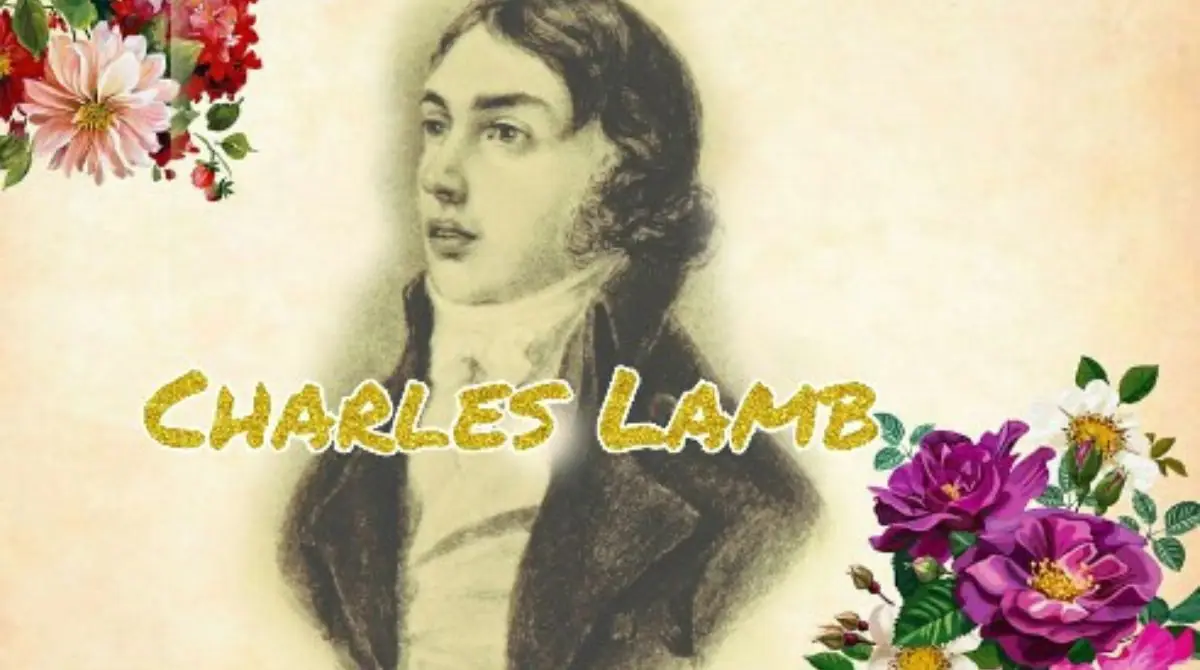Style of Charles Lamb in his essay
The style of Charles Lamb is so peculiarly of his own that it is difficult to analyse it. It is the result of his study of a wide range of English writers, odd, out-of-the-way writings as he has confessed in one of his writings, were his favourite – study and these influenced his style. As a result, his style has often a curious and old-world atmosphere.
He generally avoids the trick and colour of modern prose, as he says, he “wrote for anything”. His style often smacks of the seventeenth century prose-writers like Brown, Burton, Fuller, Jeremy Taylor and Walton.
The Elizabethan traits in his style show themselves in his love for word-coining, his fondness for Alliteration, his use of compound words, his formation of adjectives from proper names, his frequent use of Latinisms. Thus, his style is a happily achieved ‘conglomeration’. It is a conglomeration of many a style but at the same time, it has a distinct, individualistic flavour which has been called ‘Lambian’.
Among all the English essayists, Charles Lamb (1775 – 1834) occupies a conspicuous position and he is a great romantic literary essayist. As an essayist, it is Lamb’s glory that he brought back the subjective note which was disappeared from the essay since the days of Montaigne, its inventor. The essays of Charles Lamb are deeply pervaded by his personality.
It is the man Charles Lamb who contributes the enduring charm in his essays. Thus, in a sense, he is the most egoistical of all the essayists. But there is nothing vulgar or morbid in his egoism. He takes the reader into his inner circle as his friends, and tells them everything about his life with frankness.
Except his insanity on which he is silent, all the minute details of his inner and outer life have been put down in his essays with such an air of confidence that the reader takes interest in them. Thus, the essay has been used by him as the instrument of constant self revelation. Like Montaigne, he might have said, “I speak into paper as into the first man”.
For instance, in “Dream Children: A Reverie” Lamb takes his readers into intimate confidence and unhesitatingly tells them, here he often visits his grandmother’s house at Norfolk in vacations, how he spent his time there, in the big garden and in the solitary mansion.
He has also described nicely in his essay his grandmother Mrs. Field, his elder brother, John Lamb and also his Lady love, Alice Winterton (Ann Simmons). The essay has also spoken of his two dream children, John and Alice. They are the children of his dream, and not the real children. In fact, Lamb was a life-long bachelor but he loved a young girl, Ann Simmons. Thus his essay is intensely autobiographical.
Another great charm of his essays is his rich and inimitable humour. This humour as Walter Pater has put it in his essay on Charles Lamb, is the “laughter which blends with tears”. In “Dream Children: A Reverie”, Lamb’s humour and pathos are blended with superb artistry.
Little Alice’s involuntary movement of her feet at the mention of Mrs. Field’s fine dance, Alice’s spontaneous spreading of her hands at the mention of Mrs Field’s wonderful memorisation of the Psalms of the Bible, John’s looking courageous at the mention of the ghost’s story are the delicate examples of humorous touches in his essays.
The humour is always characterised by geniality, lovingness and pleasing sensation. Nowhere there is satire on them. Occasional touches of humour also light up the pages by such playful terms of expressions as found in “The Superannuated Man” like “desk-fellows”, “co-brethren of the quill”, “the superannuated simpleton”, “retired leasure” etc.
And side by side, there is deep pathos inseparable from Lamb’s style. “Had I a little son, I would christen him; nothing to do: he should do nothing”. “Homour with him is never far from tragedy”, says Compton Rickett, “through his tears you may see the rainbow in the sky”. For instance, we may refer to the lines where his two dream children say to him, “We are not of Alice, nor of thee, nor are we children at all.
The children of Alice call Bartrum father. We are nothing, less than nothing and dreams. We are only what might have been and must wait upon the tedious shores of Lethe millions of ages before we have existence and a name”.
Lamb’s fondness for Latin quotation is also seen in the essay, “The Superannuated Man” in such expression as “Esto perpetua” etc. But how befitting they are in the proper context that we do not experience any difficulty to understand them.
Another great feature of Lamb’s essays is his fine imaginative quality. He is essentially a poet with imaginative vision of a poet. His eyes penetrate beneath the common things and find there in the beauty and romance which other minds pass by.
In A.C Benson’s words “the strength of Lamb’s essay lies in the fact that he condescends to use the very commonest thing and he transfigures the simplest experiences with a fairy like delicacy and romantic glow”.
Thus, in “Dream Children” Lamb finely describes the idiosyncrasies of the children and various other things relating to Mrs. Field, John Lamb, Alice Winterton and himself colouring them with his charming personality and graceful imagination. His prose is at places, full of the fine flavour of poetry. For example, “We are not of Alice, nor of thee, nor are we children at all”. Such lines we can never forget and Lamb leaves, indeed, a great influence as an essayist on his posterity.
You May Like To Read More:
